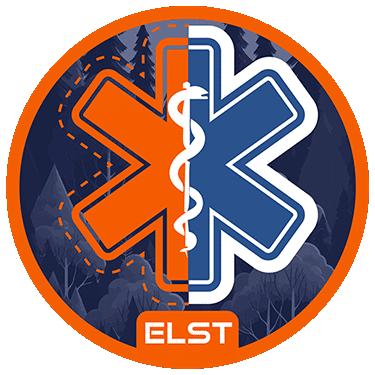First Aid Emergencies and how to control stress.
Dealing with a life-or-death Emergency First Aid situation can be stressful and may affect how you think and/or lead to mistakes such as not assessing the scene for dangers properly, forgetting some of your life-saving skills on your Emergency First Aid at Work, or any of the workplace courses.
The ways in which our thinking changes under stress are probably even more important in a First Aid incident. There are four major steps at which stress can impair our behaviour:
- perception of the problem
- analysis of the problem
- decision making
- motor skills/action
There are several different physical manifestations of acute stress. Most of us have experienced sweaty palms, rapid heart rate, and stomach upset that can accompany stressful scenarios like exams or job interviews. At higher stress levels, tunnel vision can occur, possibly leading to decreased situational awareness and missed information. Auditory exclusion or “tunnel hearing” can impair communication. Perceptions of time can either speed up or slow down. Peripheral constriction of blood vessels results in impaired fine motor control and tremors can occur.
Parasympathetic and Sympathetic Nervous System
Understating these two systems allows the First Aide to appreciate how the brain responds to different situations.
- The parasympathetic division of the autonomic nervous system helps maintain normal body functions and conserves physical resources. This division also performs such tasks as controlling the bladder, slowing down heart rate, and constricting eye the pupils.
- The sympathetic division of the autonomic nervous system regulates the flight-or-fight responses. This division also performs such tasks as relaxing the bladder, speeding up heart rate, and dilating the pupils.
Overusing our Sympathetic Nervous System can lead to serious mental health problems as well as physical health. Fight or flight served its purpose well when the sabre tooth tiger came after us when we lived in caves; it was not meant to be triggered on a regular basis.
The parasympathetic division of the autonomic nervous system
The sympathetic division of the autonomic nervous system
Let’s use a little Neuroscience to help us stay calm
What is Neuroscience?
Neuroscience is the science of the brain and the nervous system and is a relatively young science compared to others. The history of Neuroscience is a fascinating story, and their research is leading the way forward in so many ways to benefit physical and mental health conditions.
For those of you that have attended any of our first aid courses, you will know we add a little snippet of Neuroscience to how we educate people and in keeping you calm in an emergency. Staying calm and collected with something as dramatic as a catastrophic bleed from a chainsaw accident or a road traffic incident, would obviously be far more beneficial than stressing out and making possible mistakes, which could harm you or the casualty. Also, approaching the casualty calmly will give them far more comfort and confidence in their most desperate time of need.
You have an unconscious but breathing patient, what can you do to stay calm?
- BREATH! Yep, it’s that simple, however, there are some specific techniques we can use which have been proven in science, and they really do work.
-
Physiological Sigh
This technique is possibly the fastest way to reset yourself back into the parasympathetic (calm) nervous system.
Physiological Sighs, is a pattern of breathing of two inhales, followed by an extended exhale. This pattern of breathing occurs spontaneously in sleep when C02 levels get too high but these breaths can be done deliberately any time we want to reduce our levels of anxiety and calm down fast.
One to three of these breaths will reset things nicely back into a calm state of mind.
Neuroscientist Dr Andrew Huberman eloquently explains all in this short video. I highly recommend following the information delivered by Dr A. Huberman.
· Box breathing
Box breathing is rooted in an Ayurvedic form of breathwork called pranayama that originated in India and is practised in yoga. Now, you might be thinking at this stage that these techniques are a bit wishy-washy nonscience – what if I told you they are used by some special forces throughout the world.
Former SBS soldier, Ollie Ollerton reveals a breathing method to stay calm.
U.S. Navy SEALs also use box breathing in high-stress situations to aid in stress management and overall wellness.
Box/Square Breathing
Step One
Breathe in slowly and deeply through your nose to the count of four. In this step, count to four very slowly in your head. Feel the air fill your lungs, one section at a time, until your lungs are completely full and the air moves into your abdomen
Step Two
Hold your breath for another slow count of four
Step Three
Exhale through your mouth for the same slow count of four, expelling the air from your lungs and abdomen. Be conscious of the feeling of the air leaving your lungs
Step Four
Hold your breath for another slow count of four
Repeat three or four times until you feel calmer.
Mark Divine (born July 14, 1963) is an American author, podcaster, and retired Navy SEAL Commander. His military service spans 20 years (1989–2011) where he oversaw various missions around the world including Asia Pacific, Africa, Bahrain, and Iraq. He retired at the rank of Commander in 2011.
Take a look at an explanation of how to do box breathing by this former Naval Seal.
I really hope this blog has been useful in helping you learn how to stay calm, not just in a First Aid life-threatening situation but in all stressful situations.
Stay safe and take care
Andy Sullivan
Director
